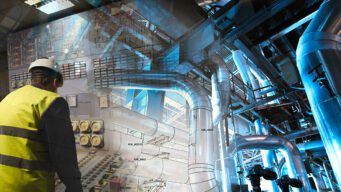Work-in-progress documents are managed in project workspaces. Project members are assigned to roles and project tasks are assigned to project members. With that setup, project workspaces ensure that planned documents are delivered in time by the responsible party.
In my last blog in this series on Engineering Document Management in capital projects I discussed the Master Document Register. In this blog I am going to explain the importance of a project workspace to achieve project success.
Once a capital project is planned with all its components and document deliverables, project managers and document controllers have to make sure that the production of these documents gets started and steered to the responsible engineers and contractors. This is the time when document controllers create project workspaces for each work package as a location:
- to which planned documents can be checked out to be edited and
- in which new documents can be registered, reviewed and approved/rejected.
Engineering work packages of capital projects are (contractually) agreed subsets of the total amount of work to be delivered, i.e., a diverse set of deliverables that are assembled to support a specified scope of work. Depending on the type of project, industry or discipline a work package can consist of a subproject, a discipline or just a component that may come from a single vendor, contractor or consultant.
We would recommend the creation of a document project workspace for each work package because the responsibilities of submitting, delivering, reviewing and approving the documents are automatically determined by the assignments of users to the project roles.
All engineering work packages consist of many documents to be delivered, e.g., scope definition, bill of material, engineering data, design specifications, referenced drawings, certificates, etc.

Project workspaces serve as the location to which planned documents can be checked out to be edited. If the contractor or lead engineer wants to add additional documents on top of the documents already planned, they can do that as well in the project workspace. New documents get an initial revision number when they are registered.

Project workspaces consist of roles such as document controller, package responsible, contractor, reviewer, and approver. Document controller or lead engineer can assign users to the roles which determines their permissions in the workspace and their tasks in the review and approval process flow.
In addition to engineering work packages we recommend the creation of document workspaces for general project documents, project management, process diagrams, etc.

The generation of master workspaces and project workspaces is template based with pre-configured folder structures, attribute categories, permissions, project roles, document templates, document numbering, revision schema and reports. Documents can be checked out to multiple project workspaces simultaneously to allow concurrent editing.
You may create as many project workspaces as you have engineering work packages. The number of project workspaces is dependent on the size of the capital projects and the number of documents you are expecting for each package.
Managing the timely creation, approval and delivery of thousands of documents in an engineering capital project requires defining project roles to which project members are assigned. Project workspaces represent a shared work-in-progress area for a project work package in which project members plan, edit, review and approve documents.
Optimize your asset information management! Explore the solution for capital project and operations and maintenance teams.
OpenText Professional Services have years of experience in Engineering Document Management in Capital Projects, please contact us if you would like to speak to an expert with regards to your project.
Author: Jens Friehmelt – Jens is a Senior Manager in OpenText Professional Services EMEA leading an international team which combines multiple OpenText technologies to serve customers with best practice solutions for Engineering, Construction and Maintenance processes.




